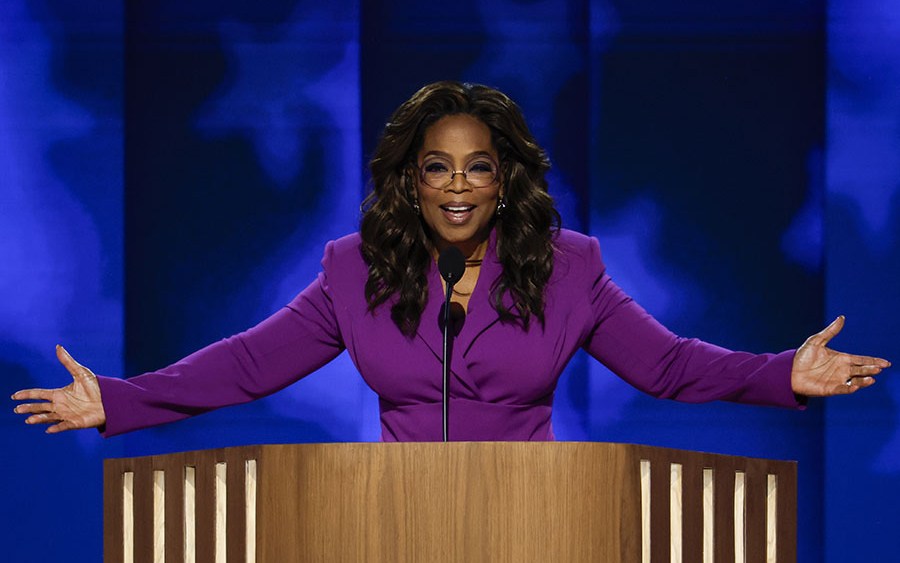Luxury brands entered 2025 at a true crossroads, confronting slowing global growth, rising inflation, tariffs and always-evolving consumer behaviors. It’s not all bad news, though — experiential luxury and experiences are driving spending while at the same time, high-net-worth individuals are continuing to drive spend even amid economic uncertainty.
To understand all of this change, Kearney’s annual global luxury industry outlook report took an in-depth look at what is shaping today’s global luxury market, revealing key factors that indicate the good and the bad. Importantly, following what has been a tough few years, Kearney’s report highlights strategies to win in a cooling market, giving perspective to what matters to these spenders.
Notably, Kearney’s research took place in early 2025.
You May Also Like
Brian Ehrig, a partner at Kearney, said that writing this report felt interesting given recent years, telling WWD that the team made the report “focused on how to win in a cooling market because that’s really what the players in luxury want to know. They already know that it’s not growing very fast and there were a lot of threats of tariffs.”
Moreover, he said, the report aimed to provide insights into some of the scenarios where the industry could be going and key trends that coincide. “We tried to be a little bit nuanced with it as well, thinking about who these customers are and where they are actually spending, because luxury isn’t just about handbags.”
One key category with potential is wellness. Driven by longevity, Kearney’s report found that the wellness economy offers new opportunities for luxury brands to lean into with services that focus on health and vitality. The wellness economy is expected to exceed $7 trillion this year.
As consumers spend big on treatments and products that promise to extend lifespan and vitality, they are also embracing the category as a new status symbol. These high-value services include regenerative medicine, advanced antiaging treatments and performance optimization. Consumers spending on these experiences expect luxury brands to lead with personalized, science-driven innovations that promote well-being and longevity.
The authors of the report advised luxury brands to integrate longevity offerings into their core value proposition to enhance relevance. “By offering holistic experiences that emphasize both health and exclusivity, they are positioned to attract a discerning clientele seeking sustainable and transformative solutions that increase physical, emotional and spiritual well-being and — by extension — offer longer and happier lives.”
Another key finding in the report is the diversification of the luxury consumer — a cohort that the report finds is more diverse than ever, highlighting a broad range of generations, income levels and cultural values.
The authors of the report point out that Gen Z, now 20 percent of global luxury sales, is purchasing luxury items three to five years earlier than was seen with Millennials. Aspirational shoppers account for nearly $275 billion annually, with many due to transition into high-value consumers with the challenge being competing with other consumer priorities.
With priorities for luxury goods holding different meanings to different consumers, the report states that leading brands are addressing challenges with storytelling to engage consumers across age groups.
“One part of it is looking for individual expression,” Ehrig said. “And what this means is having high-quality items but standing out from the crowd. [For example, for younger consumers] maybe you’re not the seventh person in your friend group that has the same bag, you’re looking for access to new products with the discovery that have stories that relate to you in some way as opposed to purely just being based on heritage.”
Ehrig added that it is also important to meet expectations for digital engagements in this way.
“From a digital channel perspective, it’s a more economic way at times, if you can be targeted to reach a broad consumer segment, as so much of the luxury marketing is brand building,” said Nora Kleinewillinghoefer, partner at Kearney. “With digital, you can also be much more intimate in terms of how you’re connecting to a consumer, much more tailored in terms of the way that you’re supporting them. When we think a little bit more broadly about it, outside of the digital channel, in terms of the economics of it, I think the entire sector has gotten far more competitive, and I think that’s going to be the trend that we see in the next couple of years.”
At the same time, Kleinewillinghoefer said that looking at some of the price increases in the luxury sector that have happened in the last few years there has been a significant number of consumers that may have been priced out of the category (approximately 50 million in the last two years). As a response, consumers have turned to alternatives including the resale market and counterfeits. Kearney’s report estimates that counterfeits account for up to a quarter of luxury goods sales today.
This change, Kleinewillinghoefer said, is an opportunity for new brands that can tailor to demand to create a new step for the aspirational consumer who loves elements of luxury. “To remain competitive, brands must go further, rethinking segmentation targets in ways that better address evolving price sensitivities.”
With many challenges continuing to put a strain on the luxury market and competition continuing to stay fierce, Kleinewillinghoefer noted that it is imperative to know your consumers.
“The consumer is continuing to become far more diverse than they have been in the past, and that’s across each demographic set,” Kleinewillinghoefer said. “It’s being laser-focused on who they are and what your brand means to them and how you best serve them. Relying on the heritage of a brand is going to deteriorate quickly. The new consumer is savvy, they are not as brand loyal as some prior generations were, so it’s critical to just really, truly know who they are and stay connected to them.”



